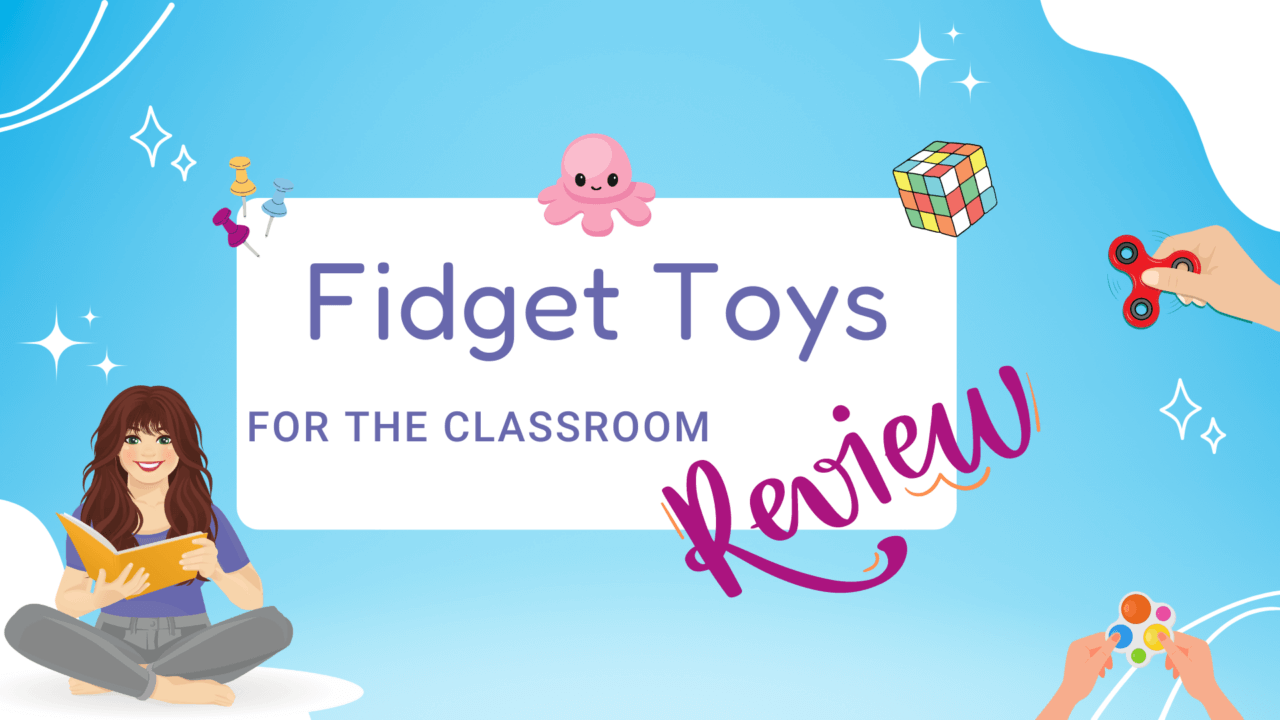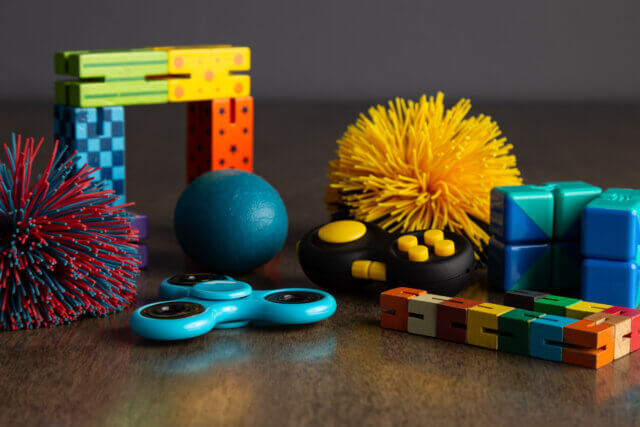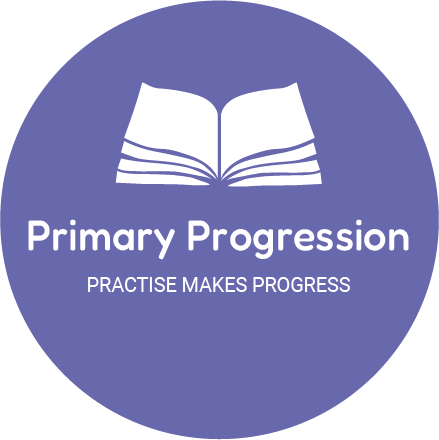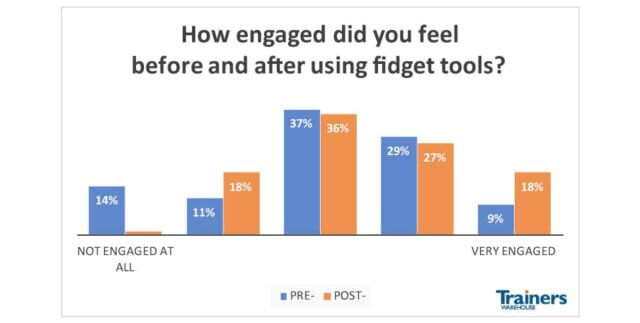As teachers and educators, we are constantly searching for ways to engage and support our students in the classroom. This is particularly important for students with ADHD, anxiety, or other conditions that affect attention and focus. One tool that has gained popularity in recent years are fidget toys. But what are fidget toys, and how can they help our students in the classroom?
Fidgeting to Focus: A Review of Fidget Toys for the Primary Classroom


Fidget toys are small, portable objects that can be manipulated and played with to help regulate dopamine levels, norepinephrine levels, improve focus, and reduce stress and anxiety. They are usually non-disruptive and easy to use, making them an excellent tool for students in the primary school classroom.
The Science?
Studies have shown that fidget toys can have a positive impact on students in the classroom. A study published in the Journal of Applied Cognitive Psychology in 2009 found that fidgeting can improve memory recall for both verbal and visual information. Another review published in the International Journal of Humanities and Social Science Research in 2016 found that fidgeting can improve focus, attention, and cognitive processing in students.
In addition to these journals, Frontiers in Human Neuroscience, 2013 found that fidgeting and fidget toys have been found to increase blood flow to the brain, which can improve cognitive function and increase alertness . They have also been shown to improve attention and task engagement in children with ADHD in the classroom Journal of Abnormal Child Psychology, 2019; Journal of Developmental and Behavioral Pediatrics, 2019. Even something as simple as using a stress ball can improve attention and reduce anxiety in individuals with ADHD Perceptual and Motor Skills, 2020.
Furthermore, Dr. Maya Dobson, Clinical Psychologist and Assistant Professor of Psychology at the University of California, Los Angeles, explains that Fidgeting and fidget toys can provide a helpful outlet for excess energy, allowing the brain to stay focused and engaged in the task at hand. For students with ADHD, anxiety, or other conditions that affect attention and focus, fidget toys can be a valuable tool for regulating their arousal level and improving their ability to learn.
Finally, Dr. Sarah Woods, Educational Psychologist and Senior Lecturer in Psychology at the University of Manchester, UK, states that Fidget toys can be a helpful tool for students who struggle with attention and focus in the classroom. By providing a discreet and non-disruptive outlet for excess energy, fidget toys can improve attention and task engagement, allowing students to better process and retain information. They can also help to reduce stress and anxiety, which can further improve academic performance.
Today, we are going to look at a variety of fidget toys and the pros and cons of using them within the primary classroom. The specific toys I will be focusing on can be found here:
(Disclaimer: This is an affiliate link.)
Fidget Toy Number 1: Stretchy Strings/Monkey Noodles

Stretchy strings, also known as monkey noodles, are a type of fidget toy that have become popular in primary school classrooms. These toys are long, stretchy tubes made of a silicone material that can be stretched, twisted, and knotted. These toys are non-disruptive, portable, and easy to use. They can be stretched and manipulated discreetly under a desk or in a student’s lap, allowing for an outlet for excess energy without distracting other students. However, some children do not use these responsibly and they can be pinged/hit towards other students and hurt them slightly.
Fidget Toy Number 2: Marble and Mesh/ Marble Finger Trap

Marble and mesh, also known as marble finger traps, are a type of fidget toy that consists of a mesh material which is filled with small plastic balls or marbles, and they can be manipulated and squeezed to create resistance. These can be used silently in the classroom and very discreetly so other students won’t be distracted (and some students using them don’t like to draw attention to the fact that they need to use them to focus their attention).
Fidget Toy Number 3: Squeeze a Pea

Squeeze a pea fidget toys consist of a small, soft, and squishy plastic ball that can be squeezed and manipulated to provide tactile stimulation. Studies have shown that these toys can improve focus and attention, reduce stress and anxiety, and increase task engagement for students with ADHD and other conditions that affect attention and concentration. They are non-disruptive, portable, and easy to use, making them an excellent resource for helping students regulate their arousal levels and stay on task.
Fidget Toy Number 4: Mochi Squishies

Mochi squishies are made of a soft and squishy material that is meant to be squeezed and manipulated for tactile stimulation. While they can improve focus and attention, reduce stress and anxiety, and increase task engagement for students, they can get dirty quickly, which can make them less appealing to use. It is also important to consider individual preferences, as the soft and squishy texture of the material may not appeal to all students.
Fidget Toy Number 5: Wacky Tracks

Wacky tracks consist of a flexible plastic track that can be bent and manipulated in a variety of ways, providing a tactile stimulation that can improve focus and attention. These toys are both portable and discreet, making them easy to use in a classroom setting. Additionally, they are durable and long-lasting, making them a cost-effective solution for primary schools.
Fidget Toy Number 6: Fidget Snake Puzzles

Fidget snake puzzles consist of interlocking plastic pieces that can be manipulated and assembled in a variety of ways, providing a tactile stimulation that can improve focus and attention. These toys are small and quiet, challenging and engaging, which can help improve problem-solving skills and increase motivation. They can also be used as a tool for promoting teamwork and collaboration.
Fidget Toy Number 7: Push Pop Bubbles

Fidget push pop bubbles are colourful, discreet and simple to use. They come in a variety of shapes and sizes and can be used for other activities in the classroom other than focusing attention. However, they may not be as durable as other fidget toys and can become dirty or stained quickly, so it’s important to keep them well maintained.
Fidget Toy Number 8: Fidget Controller Pad
 Fidget controller pads offer a range of functions and can be appealing to students who need different types of stimulation to stay focused and engaged. They are smaller than most fidget toys making them more portable and can sometimes be customised. However, they may not be suitable for all students and should be used responsibly and in moderation. Often the clicking function can be irritating or unsettling for other students in the classroom.
Fidget controller pads offer a range of functions and can be appealing to students who need different types of stimulation to stay focused and engaged. They are smaller than most fidget toys making them more portable and can sometimes be customised. However, they may not be suitable for all students and should be used responsibly and in moderation. Often the clicking function can be irritating or unsettling for other students in the classroom.
Fidget Toy Number 9: Bicycle Chain

Bicycle chain fidget toys are small and durable, providing a tactile and sensory experience for students who need it. However, they need to be used responsibly and in moderation to avoid disrupting others as they are usually made from metal and tapping this on the table can become frustrating for other students.
Fidget Toy Number 10: Infinity Cubes

Infinity cube fidget toys are a type of fidget toy that provides a tactile and visual experience for students. The toy consists of multiple blocks that can be flipped and folded in an infinite number of combinations, which provides a sense of challenge and satisfaction. The Infinity cube is small and lightweight, making them easy to carry around. This allows students to use them discreetly in the classroom, which can be helpful for those who are self-conscious about fidgeting. The Infinity cube fidget toys are made from sturdy materials and are designed to withstand regular handling and manipulation. This makes them a reliable and long-lasting choice for students. Despite these benefits, it’s important to keep in mind that infinity cube fidget toys may not be suitable for all students. Some may find the noise or movement of the toy distracting, while others may prefer more subtle forms of fidgeting. Additionally, like any fidget toy, it’s important to use infinity cube fidget toys responsibly and in moderation to avoid disrupting other students or the teacher.
Fidget Toy Number 11: Rainbow puzzle ball

Rainbow puzzle balls are a popular fidget toy option in primary school classrooms. These toys consist of small, brightly coloured plastic balls that are connected by stretchy bands, forming a sphere that can be manipulated and squished. In the classroom, these toys can provide a physical outlet for children who need to fidget in order to focus on their work. The colourful design can also serve as a visual stimulation, helping to engage children’s senses. However, the balls can sometimes come apart and the stretchy bands may become tangled, which can be a distraction to both the child and others in the classroom. Additionally, the small size of the balls may pose a choking hazard to young children if the ball were to break, so they should always be used under adult supervision. Overall the rainbow puzzle ball provides great challenge and motor skill development as well as being a focus tool in the classroom.
Fidget Toy Number 12: Fidget spinner
 Fidget spinners are a very popular fidget toy in any classroom. These toys consist of a central ball bearing with three or more arms that spin around it when flicked. In the classroom, fidget spinners can provide a physical outlet for children who need to fidget in order to focus on their work. The spinning motion can be soothing and calming, helping to reduce anxiety and stress. However, fidget spinners can, on occasion, be loud and disruptive in the classroom, distracting both the user and others. Additionally, the small size and intricate moving parts of fidget spinners may pose a choking hazard to young children should the toy break, so they should always be used under adult supervision. Unfortunately, Fidget spinners can also become a source of conflict, with children competing over who has the longest spin or best tricks, so they should be used with caution in a group setting.
Fidget spinners are a very popular fidget toy in any classroom. These toys consist of a central ball bearing with three or more arms that spin around it when flicked. In the classroom, fidget spinners can provide a physical outlet for children who need to fidget in order to focus on their work. The spinning motion can be soothing and calming, helping to reduce anxiety and stress. However, fidget spinners can, on occasion, be loud and disruptive in the classroom, distracting both the user and others. Additionally, the small size and intricate moving parts of fidget spinners may pose a choking hazard to young children should the toy break, so they should always be used under adult supervision. Unfortunately, Fidget spinners can also become a source of conflict, with children competing over who has the longest spin or best tricks, so they should be used with caution in a group setting.
Fidget Toy Number 13: Simple toy

Simple toys, such as rubber bands, miniature pop it toys, and stress balls, can be an effective fidget tool due to their small size and lower noise levels. The act of fidgeting with these simple toys can help children to relieve stress, improve concentration, and regulate their emotional state. They also do not usually pose a risk of choking, making them safer for young children to use.
Fidget Toy Number 14: Square fidget dice

Similar to the fidget controller, the Square Fidget Dice provides different types of stimulation to stay focused and engaged. They offer multiple textures and shapes for children to manipulate, providing a variety of stimulation options. The clicking sound they make can be soothing for some children and can also help to regulate their emotional state. However, the sound can also be distracting to others, so it is important to establish clear guidelines for their use in the classroom.
My Conclusion?
Fidgeting is a natural and instinctive human behaviour that we all engage in from time to time. Whether it be twirling our hair, shaking our legs, tapping our fingers, doodling or using a sensory or fidget toy, fidgeting is a way for us to release excess energy and focus our attention. Scientifically, it has been shown that fidgeting can have positive effects on our mental and physical well-being, as it can help to reduce stress, anxiety, and improve our overall mood. Medical studies have also shown that fidgeting can increase circulation and stimulate the brain, leading to improved concentration and memory. In short, fidgeting is a natural and necessary aspect of human behaviour, and incorporating sensory or fidget toys into our daily routine can help to enhance our physical and mental wellbeing.
Additionally, as someone who has personally experienced the benefits of fidgeting to focus, I believe that fidget toys can be a great addition to the primary school classroom if they are used in the right way. In my opinion, the quieter the toy, the better, as it helps to avoid distractions for both the user and those around them. Out of the toys discussed in this review, I have a particular fondness for the infinity cube and the fidget spinner. They both offer unique, engaging experiences, which are on the quieter end, and can provide an outlet for students who need to move in order to focus.
(Image Sourced: https://blog.trainerswarehouse.com/do-fidgets-boost-engagement)


